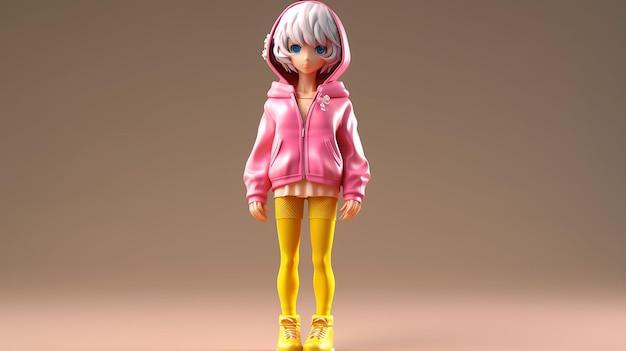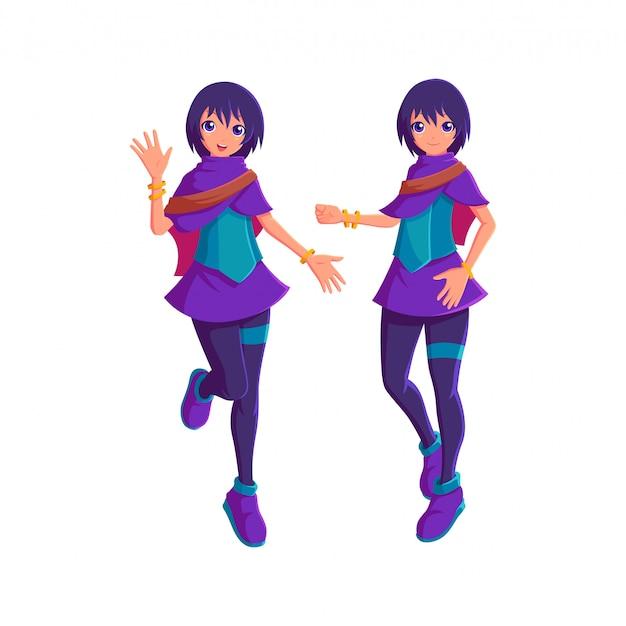Are you fascinated by the world of MMD (MikuMikuDance) and want to bring your favorite characters to life through 3D printing? Look no further! In this comprehensive guide, we’ll dive into the exciting realm of MMD models and explore the steps to transform them into physical objects.
From understanding the basics of MMD and its file formats like PMX and PMD, to learning how to convert and import models into popular software like Blender, Maya, and GMOD, we’ll cover everything you need to know. Whether you’re a seasoned MMD enthusiast or someone taking their first steps in this creative field, we’ve got your back.
Join us on this journey as we unlock the secrets of 3D printing MMD models, discover the best resources for downloading ready-made models, and explore the tools and techniques needed to export models for printing. Let’s get started on this exciting fusion of technology and creativity!
How to Bring Your MMD Models to Life with 3D Printing
Are you tired of seeing your MMD models confined to the digital world? Do you wish you could hold them in your hands and bring them to life? Well, you’re in luck! In this guide, we’ll show you how to 3D print your MMD models, so you can have your very own physical creations to display and cherish.
Finding the Perfect 3D Printer
The first step on your 3D printing journey is finding the perfect 3D printer for your needs. There are plenty of options out there, from budget-friendly models to high-end professional machines. Take some time to research and compare different printers, considering factors like print quality, build volume, and ease of use. Remember, a good printer is worth the investment if you want stunning results!
Preparing Your MMD Model for Printing
Before you can get your hands on a physical version of your MMD model, you’ll need to prepare it for 3D printing. Start by exporting your model as an STL file, which is the standard file format used by most 3D printers. Next, open your favorite slicer software (such as Cura or Simplify3D) and import the STL file. Here, you can adjust settings like layer height, infill density, and support structures to optimize your print for quality and strength.
Fine-Tuning the Print Settings
To achieve the best possible print, it’s important to fine-tune the print settings specific to your model. Experiment with different settings until you find the sweet spot for your MMD model. Consider factors like print speed, temperature, and cooling settings, as these can greatly affect the final result. Don’t be afraid to iterate and make adjustments as you go – it’s all part of the learning process!
Choosing the Right Filament
Now that your model is ready to be printed, it’s time to choose the right filament. PLA (polylactic acid) is a popular choice for beginners due to its ease of use and wide range of colors. However, if you’re looking for more durability, consider filaments like PETG or ABS. Keep in mind that different filaments may require specific print settings, so be sure to consult the manufacturer’s guidelines for optimal results.
Printing, Patience, and Plenty of Coffee
Finally, it’s time to kickstart the printing process and watch your MMD model come to life layer by layer. Remember, 3D printing takes time, so make sure you have your patience hat on. While you wait, why not enjoy some coffee and marvel at the wonders of technology? A caffeinated boost might just be what you need to keep your excitement levels high!
Post-Processing and Giving Your Model a Personal Touch
Once the printing is complete, it’s time to remove any support structures and give your model a little post-processing love. This could involve sanding the edges for a smoother finish, applying a coat of primer or paint to add color, or even adding some extra details with sculpting clay or other materials. Get creative and give your 3D printed MMD model that personal touch that makes it truly yours.
Show Off Your Masterpiece!
Congratulations, you’ve successfully 3D printed your MMD model! Now, it’s time to show off your masterpiece to the world. Display it proudly on your shelf, take stunning photos for social media, or even organize a mini exhibition to dazzle your friends. Let your creativity shine and inspire others to bring their digital creations into the physical realm.
So, what are you waiting for? Dust off that 3D printer and bring your beloved MMD models to life with a touch of 3D printing magic. It’s a journey filled with excitement, creativity, and a dash of caffeine-induced enthusiasm. Let’s dive in and unlock a whole new dimension of MMD enjoyment in 2023!
FAQ: How to 3D Print MMD Models
Welcome to another informative and entertaining FAQ-style article. Here, we will answer some commonly asked questions about 3D printing MMD models. So, grab your favorite beverage, sit back, and let’s dive into the exciting world of MikuMikuDance!
What software do you use to create MMD
To create MMD models, you’ll need software like MikuMikuDance (MMD) or Metasequoia. Both offer powerful tools and features to design and animate your MMD models with ease. So, unleash your creativity and bring your virtual idols to life!
How do you perform the Miku Dance
Performing the “Miku Dance” is like leading a virtual concert in your own room! By using MikuMikuDance or MMD, you can choreograph your MMD models to dance to your favorite tunes. It’s an absolute blast, and you’re the director and choreographer all at once!
How can I convert PMX files to PMD
If you need to convert PMX files to PMD, you can use tools like PMX Editor or MikuMikuMoving. These software solutions allow you to seamlessly convert and manipulate the file formats, making it convenient to work with different versions of MMD models.
What is a PMX file
A PMX file is a model format used in MikuMikuDance. It contains all the 3D mesh data, textures, and animations of an MMD model. PMX files offer greater flexibility and support advanced features that enhance the visual appeal and functionality of your models.
Can you use MMD models in GMOD
Certainly! MMD models can be imported and used in a wide range of applications, including popular games like Garry’s Mod (GMOD). With a little tweaking and rigging, you can bring your adorable MMD creations into the virtual sandbox environment and create epic scenes.
Where can I download MMD models
There are numerous websites where you can find MMD models for download. Some popular ones include DeviantArt, BowlRoll, and MMD Mall. Explore these platforms, choose from a vast collection of models, and let your imagination run wild!
Is Blender 3D free
Absolutely! Blender 3D is a powerful open-source 3D creation suite that won’t cost you a dime. It offers a wide range of tools and features to bring your MMD models to life, making it a top choice for both beginners and professionals in the world of 3D animation.
How do I convert MMD to Blender
Converting your MMD models to Blender is a breeze. Simply export your model as an FBX file from MMD and import it into Blender. With a few adjustments and tweaks, you can fine-tune your model and harness the full potential of Blender’s extensive features.
Is MMD difficult to learn
While it may seem a bit daunting at first, learning MMD is an exciting journey filled with creativity and fun. With plenty of tutorials and resources available online, you’ll be immersing yourself in creating stunning MMD models and animations in no time!
Does MMD require any payment
Fear not, MMD enthusiasts! MikuMikuDance is completely free to use. Its extensive features and user-friendly interface make it accessible to everyone wanting to venture into the wonderful world of MMD modeling and animation.
How do I export an MMD model for 3D printing
To prepare your MMD model for 3D printing, you’ll need to export it in a format supported by 3D printers, such as STL or OBJ. Simply use software like Blender or Metasequoia to export your model in the desired format, ensuring it is optimized and ready for the exciting 3D printing process.
Does Maya support PMX files
Unfortunately, Maya does not natively support PMX files. However, you can use third-party plugins or conversion tools to import and work with PMX files in Maya. Don’t worry; with a bit of extra effort, you’ll be able to utilize Maya’s impressive capabilities alongside your beloved MMD models.
How can I convert STL to OBJ
Converting STL files to OBJ is a breeze with various software solutions available. Popular options include Blender, MeshLab, and FreeCAD. Give these tools a try, and effortlessly convert your STL files to OBJ format for further editing or compatibility purposes.
Can I port FBX files to MMD
Yes, you can indeed port FBX files to MMD! By using plugins or conversion tools like Blender, you can import FBX models and then export them as PMX files, making them compatible with MikuMikuDance. It opens up endless possibilities for creating your ideal MMD scenes.
Can I access MMD on mobile devices
Unfortunately, MikuMikuDance is not available for mobile devices. It’s currently exclusive to desktop platforms. However, there are various alternatives and mobile apps that offer similar features and allow you to explore the world of 3D animation on the go.
Do I need a CAD model for 3D printing
While designing a 3D model with CAD software is one way to create 3D printable objects, it isn’t the only option. You can also import and prepare existing models, such as MMD models, for 3D printing. So, unleash your creativity and bring those virtual idols into the tangible world!
Is there an MMD app for mobile devices
Yes! There are several MMD-inspired apps available for mobile devices that allow you to create and animate cute characters right at your fingertips. While not MikuMikuDance itself, these apps provide a similar experience, making it fun and convenient to dabble in mobile 3D animation.
How do I import models into Blender
Importing models into Blender is a cinch. With just a few clicks, you can bring your favorite MMD models or any other supported file format into Blender. Simply navigate to File > Import and choose the desired format for your models. From there, let the creative journey begin!
How do I convert an image to STL
To convert an image to an STL file, you’ll need to use software like 3D Slicer or Inkscape. These applications allow you to convert 2D images into 3D models, ready for the exciting world of 3D printing. So, embark on your artistic endeavors and transform images into tangible objects!
How do I convert FBX files to VRM
To convert FBX files to VRM (Virtual Reality Modeling Language), you can utilize software like UniVRM, which provides a seamless conversion process. This allows you to harness the power of VRM, bringing your FBX models to life in virtual reality environments and creating captivating experiences.
Can you 3D print an MMD model
Absolutely! With the correct preparations and optimizations, you can 3D print your beloved MMD models. Export your model in a suitable format, such as STL or OBJ, and then utilize slicing software for precise 3D printing. Soon, your virtual idols will come to life in the physical realm!
That concludes our FAQ-style adventure through the world of 3D printing MMD models. We hope we’ve answered your burning questions and ignited a spark of curiosity within you. Happy creating, animating, and 3D printing in this marvelous realm of MikuMikuDance!

